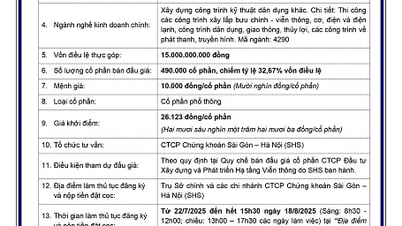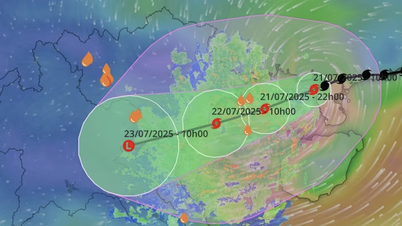Common symptoms of eye strain include eye pain, blurred vision, dry eyes, and headaches. Prolonged eye strain can reduce concentration, reduce work and study performance, and increase feelings of fatigue and stress, according to the US health website Healthline .

Using smartphones and computers continuously for many hours is a common cause of eye strain.
ILLUSTRATION: AI
Some causes of eye strain can greatly affect the quality of life and the sufferer should not be subjective.
Long distance driving
Driving long distances, especially at night or in low light conditions, can cause eye strain as the eyes have to constantly focus and adjust to changing light conditions. Glare from oncoming headlights or reflections from wet road surfaces also contribute to eye strain.
Therefore, experts recommend that drivers wear anti-glare glasses or polarized sunglasses to reduce glare. Adjust mirrors and headlights properly to reduce reflected light. Clean windshields help reduce glare. If possible, drivers should rest their eyes every 2 hours of driving by looking into the distance or closing their eyes for a few minutes.
Glare
Glare from screens, fluorescent lights, or reflected sunlight can also cause eye strain. This is because high-intensity light forces the eyes to constantly adjust to it, leading to fatigue.
The solution is to use an anti-glare filter for your computer or phone screen. Adjust the position of the screen to avoid direct light reflection on the screen. If outside light is bothersome while working on the computer or using the phone, use curtains or blinds to reduce the light intensity.
Computer Eye Strain Syndrome
Computer eye strain occurs when the eyes are forced to work continuously with a digital screen for a long time, usually 2 hours or more. Common symptoms are eye fatigue, blurred vision, dryness, irritation, and sometimes headaches. The main causes are decreased blinking frequency, causing dry eyes, and the impact of blue light from the screen.
To fix this, the first thing to do is adjust the brightness and contrast of your screen to match your surroundings. Some blue-light blocking glasses reduce the impact of blue light from your screen. Regularly apply the 20-20-20 rule, which means every 20 minutes, look at something 20 feet away for 20 seconds. This will help your eyes rest and reduce fatigue, according to Healthline.
Source: https://thanhnien.vn/nhuc-moi-mat-3-nguyen-nhan-pho-bien-va-cach-khac-phuc-185250530160411675.htm





























![[Photo] National Assembly Chairman Tran Thanh Man visits Vietnamese Heroic Mother Ta Thi Tran](https://vphoto.vietnam.vn/thumb/1200x675/vietnam/resource/IMAGE/2025/7/20/765c0bd057dd44ad83ab89fe0255b783)







































































Comment (0)